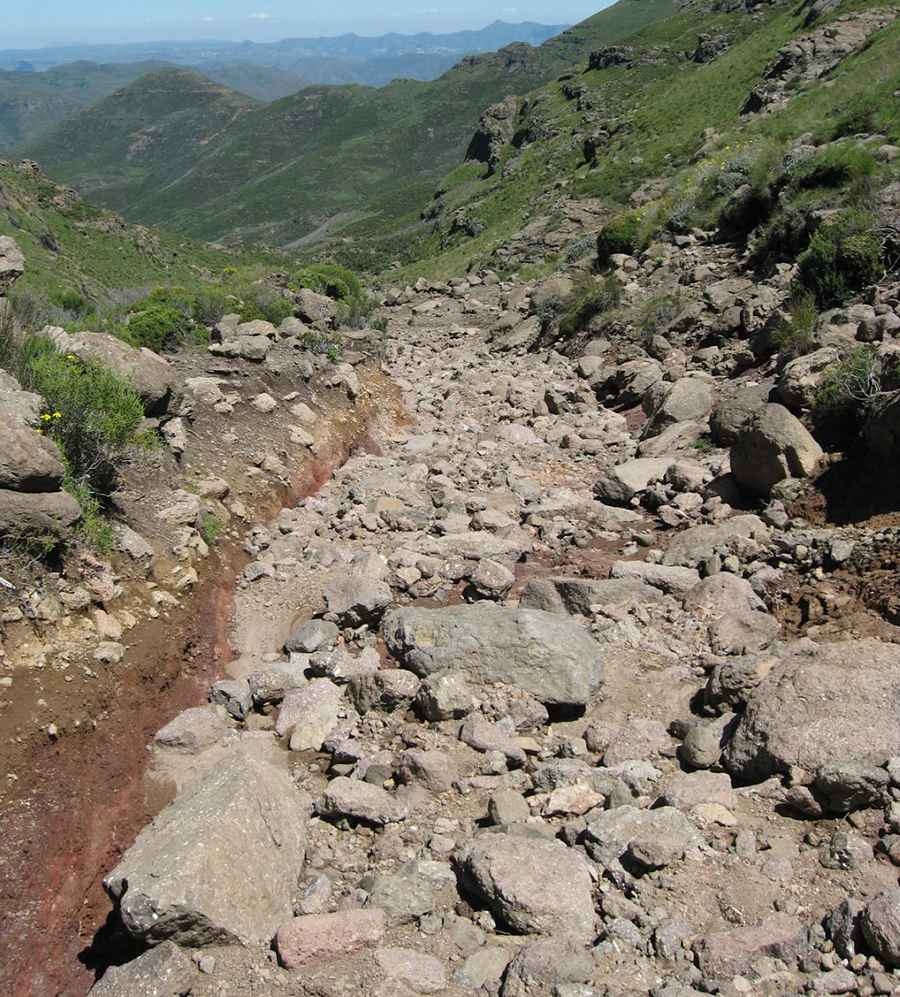Baboons Pass is more suitable for donkeys than for vehicles
Baboons Pass is a high mountain pass at an elevation of 2.689m (8,822ft) above the sea level located in the Maseru District of Lesotho. It’s one of the most remote, roughest and impassable passes of the country -- more suitable for donkeys than for vehicles. It's one of the highest roads of Lesotho.

Can you drive to Baboons Pass?
The road to the summit is brutal. It’s totally unpaved and suitable for 4x4 vehicles with high clearance only. It’s not for the faint-hearted. Expect huge boulders (with rocks the size of beach balls), narrow passages, holes and ditches causes by flooding, steep uphills, 90-degree turns, and high vertical cliffs dropping off the side. The road is very narrow. Stupid mistakes could even lead to vehicles dropping off the cliff face. Remember, the drive is tougher than tough. A new road (A5) was built to be used by trucks and cars alike; since then, this road is barely used.
How long is the road to Baboons Pass?
The pass is 26km (16.15 miles) long running from the Ramabantha Trading Post to the A5 road, near the village of Semonkong. The road has extremely steep parts. Basically, it’s 26km of unrelenting rocks and boulders which, on a good day, you can rush in under 10 hours, but when it gets hectic won’t be done in under two days. You don't frequently get to drive more than 500m without stopping to repair or build the road. Rain and snowfalls have eroded sections, and rocks weighing over a ton can block the passage. It’s not only the difficulty of the pass, it’s the fact that it can change overnight depending on the weather.
When was the road to Baboons Pass built?
Known as 'the car breaker', the pass was built in the 1960’s. The weather is very unpredictable up in the Lesotho mountains, so you need to be prepared for any weather and mostly rain. To complete the pass you engage first gear low range even before the start of the pass and you stick to it for the following 26km. Due its conditions, the ideal number for a group would be four to six vehicles: teamwork and careful planning is essential on this trip.
Pic: Graham Maclachlan